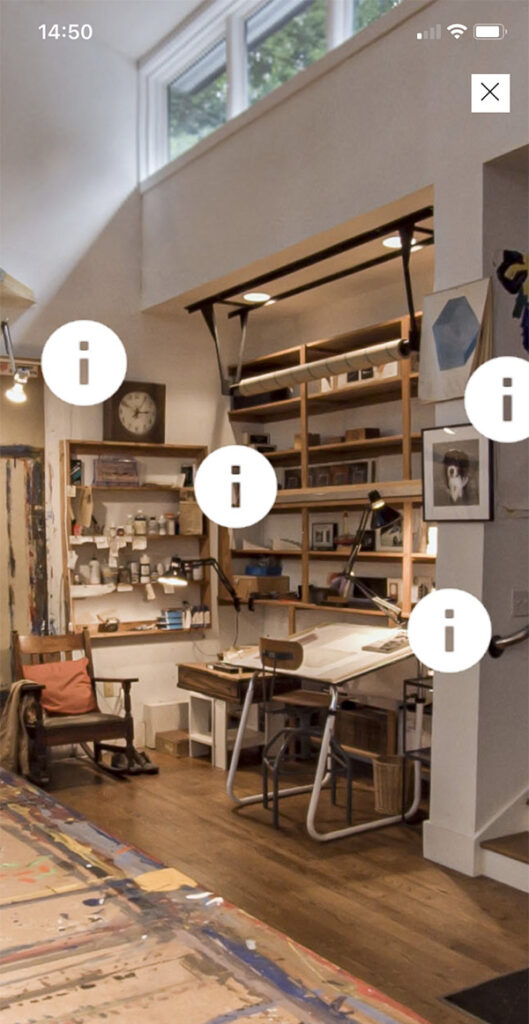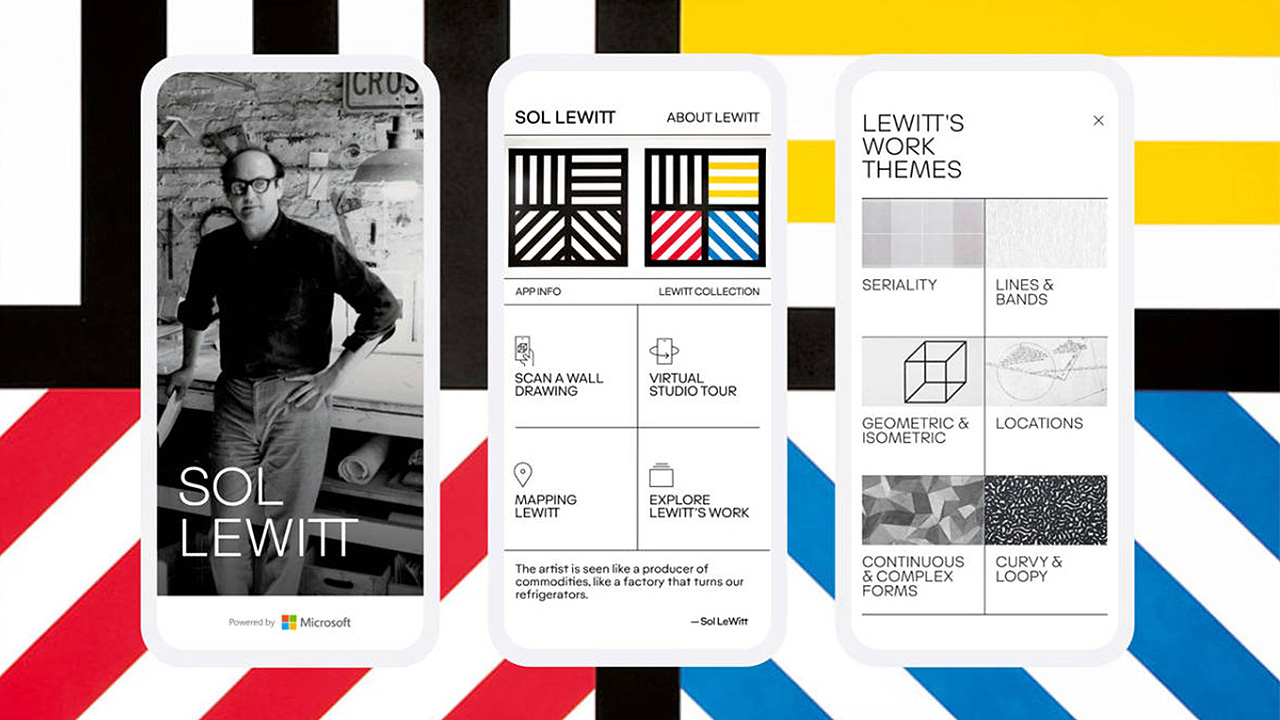At first glance, the work of Sol LeWitt, progenitor of the Conceptual movement, doesn’t lend itself all that seamlessly to digital schema. If anything, LeWitt’s contributions to the canon feel explicitly and self-consciously analog, a triumph of gesture in tension with motif. His preoccupation with all things modular, ephemeral, and geometric may not have centered the capital-A Artist’s emotional life, as in the case of his Abstract Expressionist predecessors, but it certainly lionized the Artist’s gaze, allowing LeWitt to build worlds along an alternative understanding of legacy.
Upon further examination, however, LeWitt’s oeuvre appears not just to jive with contemporary modalities, but to predict the manner in which digital interaction has defined user consciousness — the endless recombination, the embrace of early algorithmic thinking. It’s no wonder, then, that the team at Listen, a Brooklyn-based sensory experience agency that collaborates with artists and brands through the use of immersive technology, was so eager to join forces with LeWitt’s estate.
“We’re all huge LeWitt fans over here,” says Brett Volker, founding partner of Listen, as he discussed its newly released, eponymously titled Sol LeWitt app, available on iOS, Android, and Windows.

The 360-degree virtual tour of Sol LeWitt’s Connecticut studio includes object highlights that illuminate the artist’s life and practice.
The artificial intelligence-driven platform, developed in collaboration with Microsoft, allows users to “unlock” LeWitt’s artwork, life, and cultural impact by providing a timeline of never-before-seen archival footage, an intuitively organized exploration of his go-to visual themes, and a virtual studio tour pictured in a never-before-seen 360-degree capture. LeWitt fans can also utilize the “Scan a Wall Drawing” option to identify and learn more about some of LeWitt’s most famous public and institutional artworks located anywhere between Australia, Europe, Asia, and North America.
“We wanted this experience to be all about exploration,” explains Volker. “Really, it’s an opportunity to use technology to let the user find a way into the art.” Such tech-assisted cultural engagement has formed the backbone of many a museum initiative over the past year — and the Sol LeWitt app similarly centers itself on virtual discovery. “We made those connections digitally,” Volker continues, “to encourage people to explore more and to learn more, educating [them] on the fantastic contributions that Sol LeWitt has made over the years.”
The app’s honed AI recognition was developed by “cleaning and training datasets,” Volker stated, a process that involved exposing the AI to countless images of different LeWitt artworks in a variety of resolutions and camera angles. “The way forward is ‘human-plus’; we believe that technology can have really positive contributions to the world and we are trying to encourage that positivity.”

The “Scan A Wall Drawing” feature enables users to identify and discover LeWitt works — including “Wall Drawing #260A” at MASS MoCA (above) — through their smartphones. Image: Microsoft
It’s this person-first outlook that’s inspiring Listen, which has previously worked with the likes of Björk and Childish Gambino, to set its sights on the future of the art world at large. “Some institutions are a little hesitant to really embrace tech as part of their programming,” notes Volker, “and we wanted to create something that worked with users, and with museums and galleries.”
While the app definitely functions as a fun, edifying pandemic-era stand-in for art-goers, its real staying power lies in its encouragement of IRL viewership. “User experience specs are really positive so far,” said Volker. “The hardware is built in a way that it could be adjusted, but ultimately, our goal was not to fly to the top of the App Store. We wanted something that could last a really long time, something that could be a really valuable educational asset.” This forward-thinking conception of art education not only acts as a harbinger of change, but operates in line with the values of its figurehead. “The idea becomes a machine that makes the art,” wrote LeWitt decades ago, and today, the machine will help us see it.



